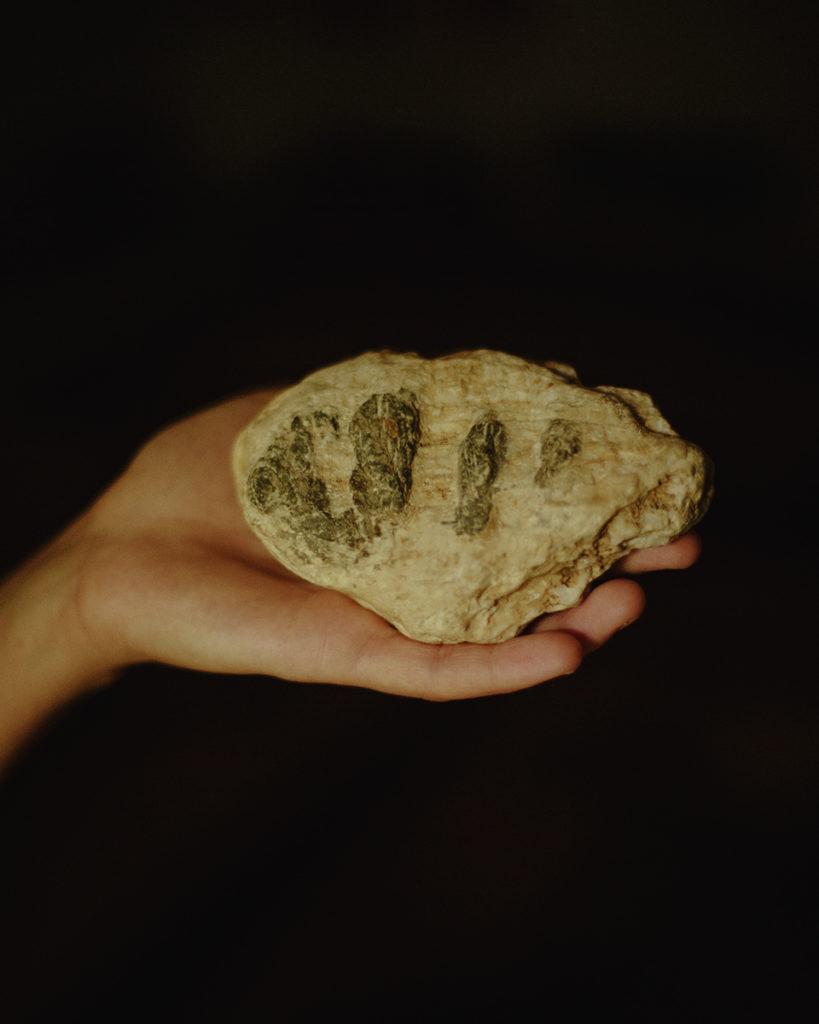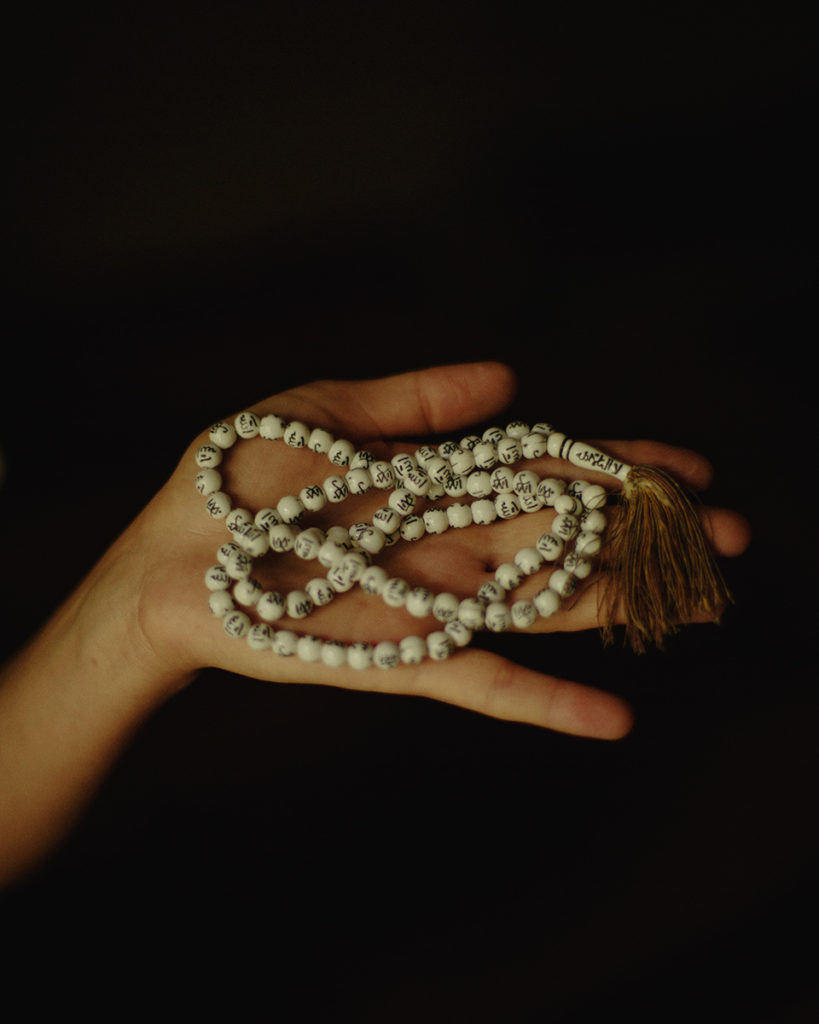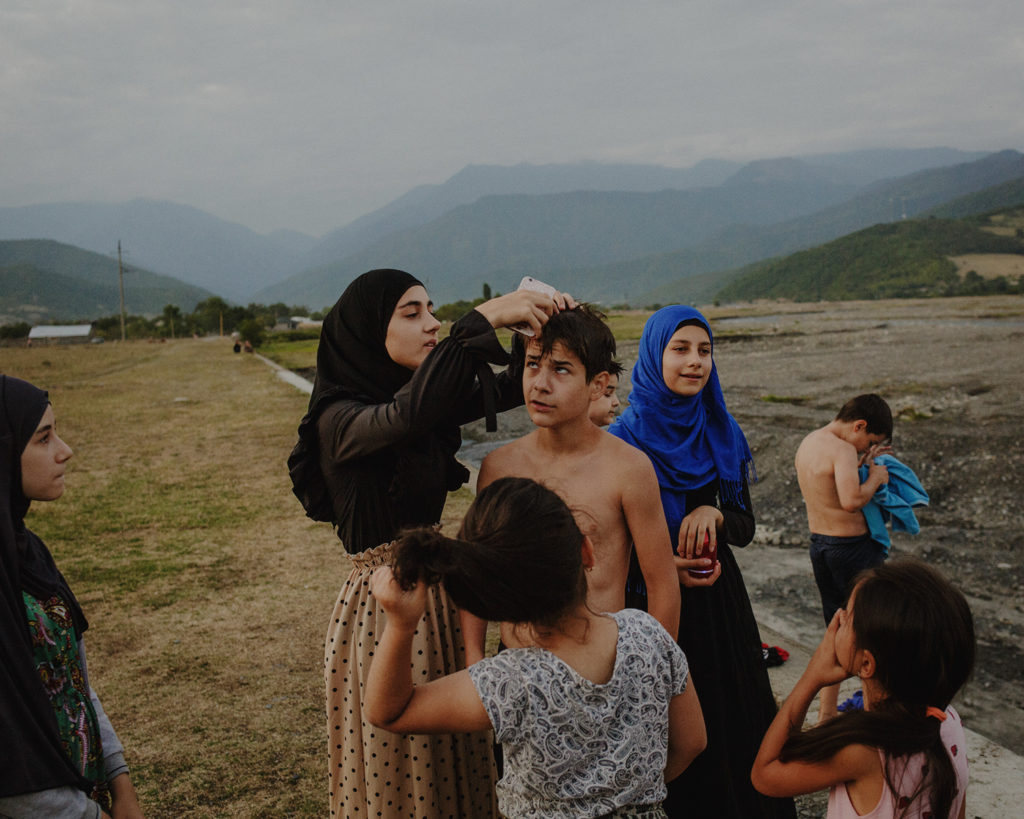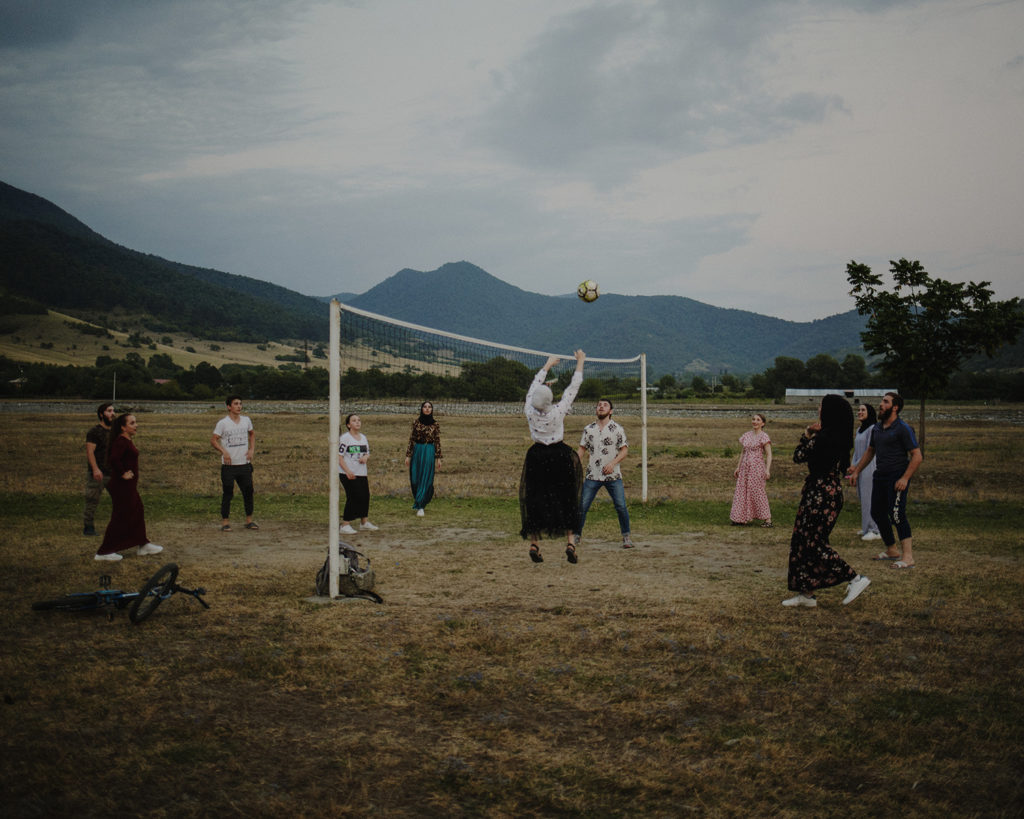In godly trance
Zikr in Georgia's Pankisi Valley
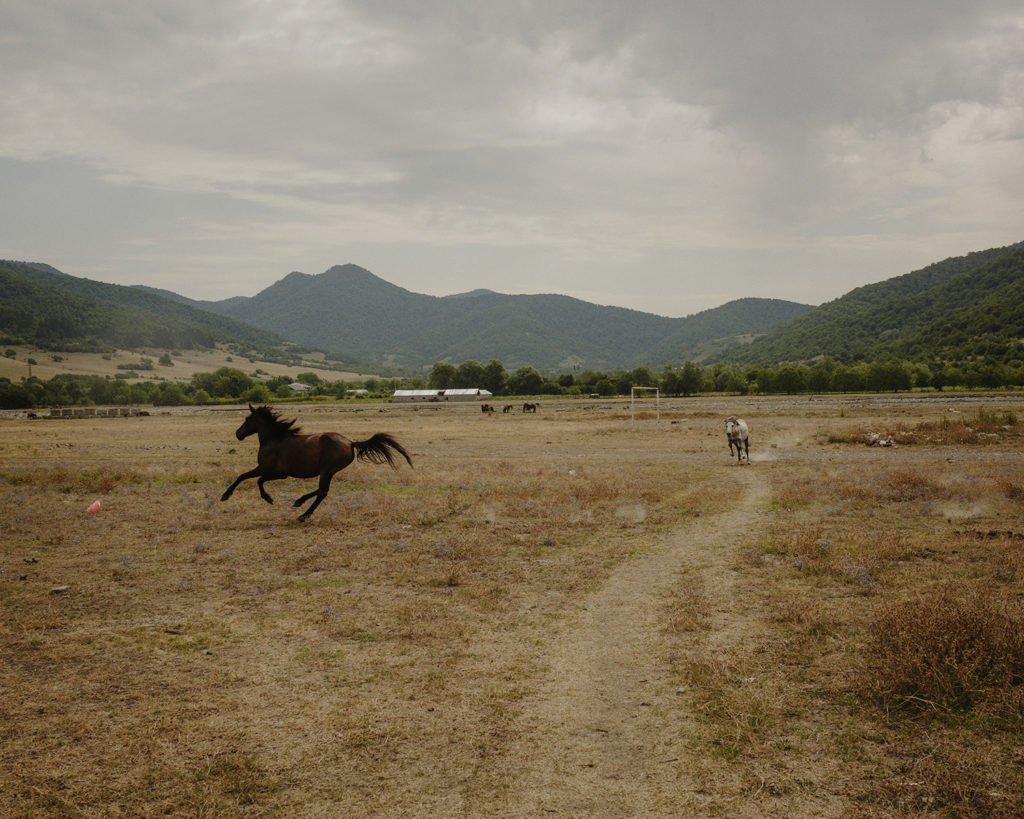
“We become a reflection of God, and ask to deserve paradise after death.”
Mohamad Margoshvili, a fit man in his late fifties wearing a sports t-shirt and green velvet prayer cap on his head, comes every Thursday evening to the men’s zikr ceremony in a small prayer room of a private house in the eastern Georgian village of Duisi.
Duisi is the main settlement of the Pankisi Valley, a dale nested between the high mountains of the Greater Caucasus in Kakheti, a region well-known for its ancient wine-making tradition. Most of the houses in Duisi are two-storey buildings with large balconies on the first floor, scattered around a network of unpaved and tortuous streets. The main activities are agricultural, including farming and cattle breeding. Cows, like everywhere in the Georgian countryside, roam free around the village.
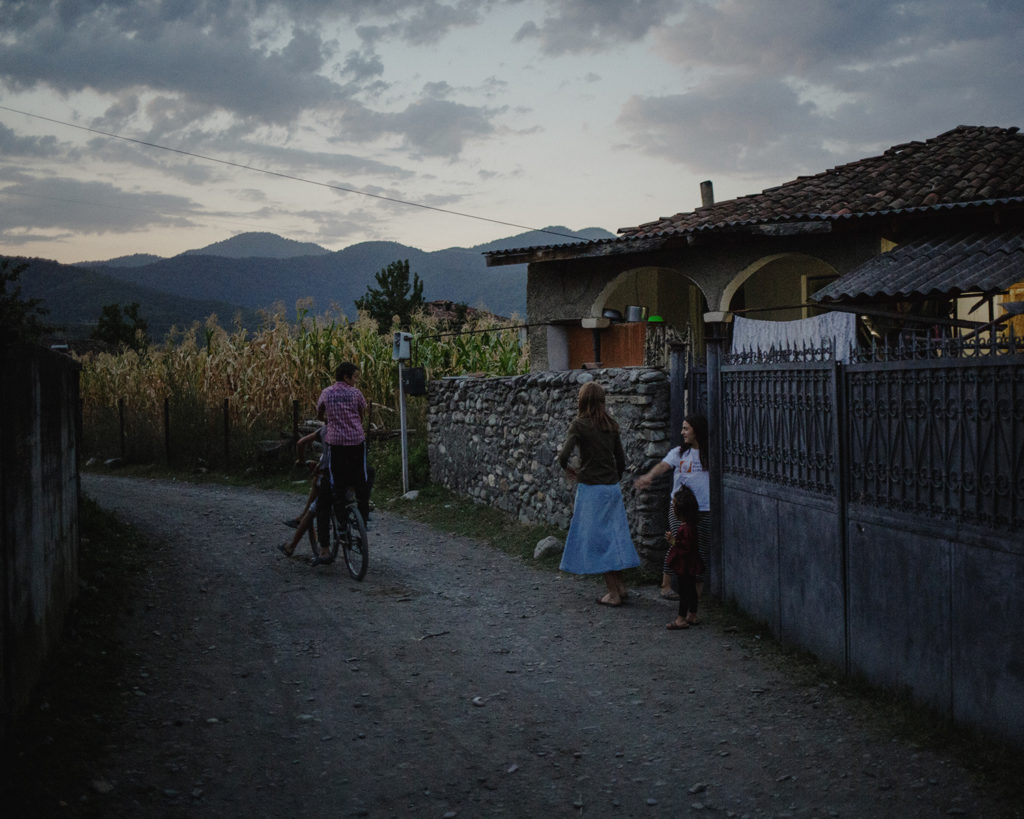
The Pankisi Valley has been home to the Kist community, to which Mohamad Margoshvili belongs, for the last two centuries. An estimated 7,000 to 10,000 Kists inhabit a cluster of villages built along the river Alazani, which runs through the valley. The community is closely related to the Chechens living not far away, on the northern slopes of the Caucasus in the Russian Federation whose border is 40 kilometres north of Duisi. Although split between different countries, both people speak the same language and share the same religion, Islam.
Zikr, in its true form, is achieved by members of a tariqa repeating short phrases or prayers, calling to or praising Allah, together.
Chechens and Kists have traditionally embraced sufism, and Sufi orders – or tariqas – have played a major role in structuring society and organising religious practices through collective rituals. One of the most treasured practices of the Sufi, says the Ansari Qadiri Rifai order on its website, is zikr, the remembrance of Allah. “To be in unity with Allah is to be in a constant state of remembrance of the source of all creation. In the sense that unity is the deepest state of surrender to Allah, this is the true zikr, and is the goal of the Sufi path.”
Zikr, in its true form, is achieved by members of a tariqa repeating short phrases or prayers, calling to or praising Allah, together. It is practiced by various Muslim communities across the globe, including places like Egypt, Senegal, Morocco, the Balkans and Bengal. Its specific forms change from one Sufi order to another, and may include singing, dancing and recitation, often leading to ecstasy and trance. In recent years, videos of spectacular Chechen zikrs bringing together hundreds of faithful practitioners attracted thousands, even millions, of views and audiences well beyond the Caucasus.
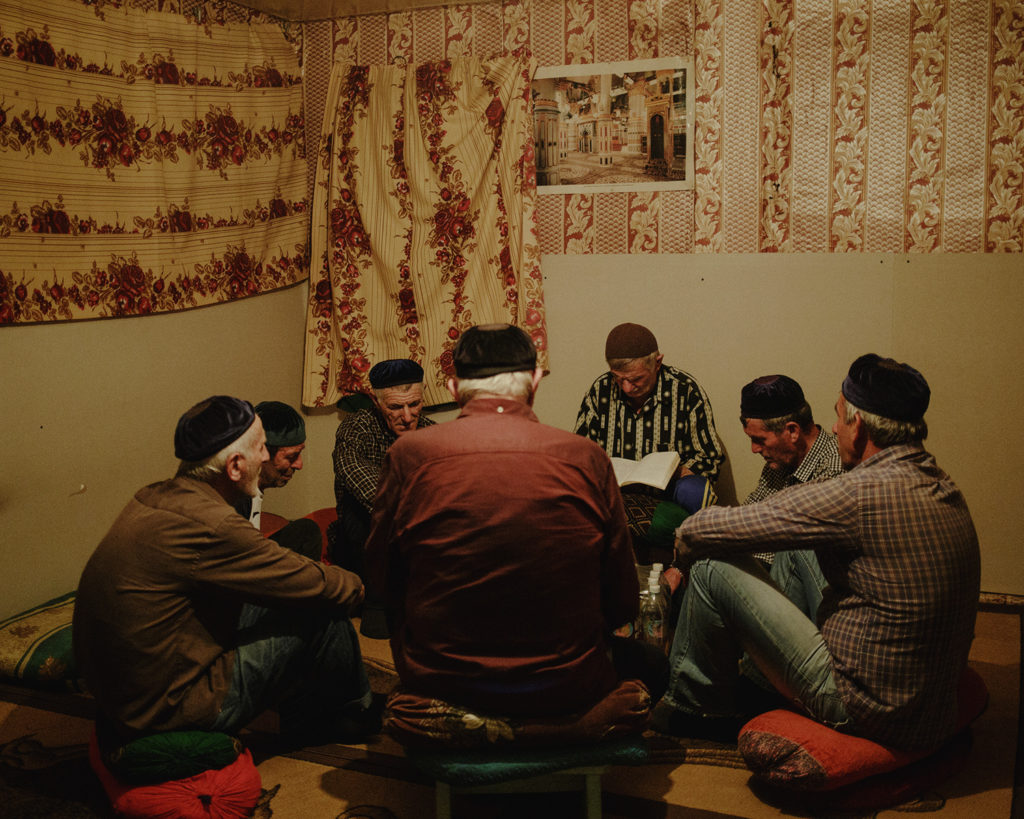
“Praying in group gives us more energy and force. And we are more than a praying group, we are like brothers,” says Mohamad Margoshvili, sitting on a coffin in the small prayer room.
Women gather at the same place on Fridays at noon, to perform the exact same rituals as the men, lasting for around one hour. Both Sufi groups are related to the Naqshbandiya order, which was first introduced in Pankisi by Isa Efendi, a preacher from Azerbaijan who lived in the house with the prayer room still in use for 15 years at the beginning of the 20th century.
At the end of the ritual, the room has turned warmer and a specific vibe unites all the practitioners.
“In other zikr groups they just move their hands. We are more dynamic in our movements, but apart from that there is little difference between us,” says Raisa Margoshvili, leader of one of Duisi’s two women’s tariqas, which meets every Friday in a small white building with light green walls next to the village’s old mosque.
Her group is related to the Qadiriyya order that was established in Chechnya by local mystic Kunta Haji Kishiev in the 19th century.
Around ten women have joined the ceremony, which starts with all of them seated in a circle. La ilaha illallah – “There is no God but God” – they sing, following Raisa’s powerful voice. This and other sentences are repeated many times throughout the ritual. Altogether, the women stand up and start walking in circles at an increasing pace. They clap hands and stamp, all the while continuing the singing. In between such dynamic parts, they stand still and sing graceful hymns in the Chechen language. At the end of the ritual, the room has turned warmer and a specific vibe unites all the practitioners. Before leaving the white building, the women hug each other and the visitors who have joined to watch the ceremony.
Besides being at the centre of weekly gatherings at the mosque, zikr also plays a crucial role in burial ceremonies.
“Women and men perform zikr in honor of the deceased, and it is believed that the beads of sweat pouring down during the rituals serve to redeem the dead person’s sins,” says 82 years-old Makvala Margoshvili, a former peace and cultural activist who led several initiatives to preserve and showcase Kist traditions.
During the Soviet era, despite the official anti-religious policies of the regime, zikr was still transmitted from one generation to another.
“Everything we knew about religion came to us from our parents or grandparents,” continues Makvala Margoshvili.
“In this period, all our mosques were officially closed. But some people were still courageous enough to gather and perform rituals, out of sight of the officials. The wooden room in the yard of my husband’s relatives’ house for example, was visited by followers of Isa Efendi twice a week for zikr. And even though the brother of my husband was summoned several times – even imprisoned – they still managed to preserve the tradition. The same rituals are performed until now.”
“The number of women who come to our rituals now is decreasing,” says Raisa Margoshvili.
Paradoxically, Georgia’s post-Soviet recovery of religious freedom might well have brought bigger challenges to the survival of Sufism in the Pankisi Valley than the years under USSR rule.
“The number of women who come to our rituals now is decreasing. Most young people go the newer mosque in the village,” says Raisa Margoshvili, who at 61 is the second youngest woman in the praying group.
Duisi’s new mosque, which shares several architectural features with the older structure, such as the use of red bricks for the minaret, has become the most frequented in the village. It is often referred to as the “Wahhabi” (as in the orthodox ideas originating in Saudi Arabia) mosque by followers of Duisi’s Sufi tariqas, who are concerned that such new teachings would forbid singing and dancing, as well as the tradition to feast during weddings or burials, all of which are perceived as cultural features traditional to the Kists.
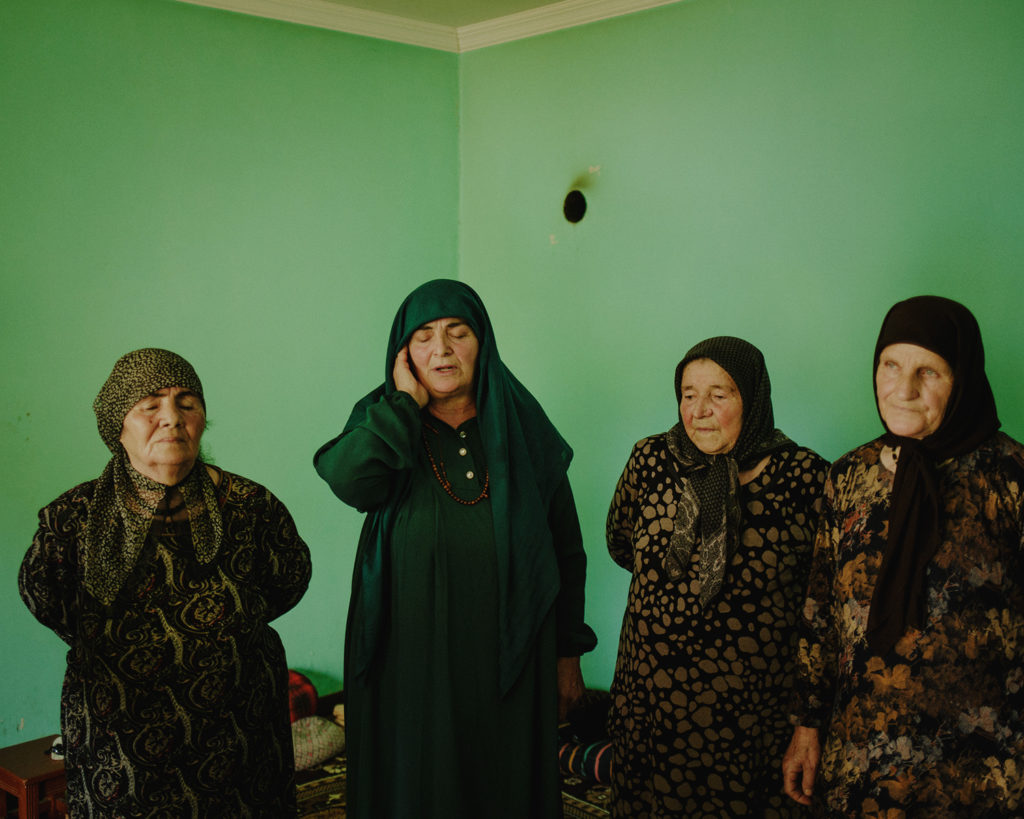
“As a result of complex historical, political and social processes, new forms of piety known as Salafism proliferated in the 1990s Pankisi,” write researchers Maia Barkaia and Barbare Janelidze in their recent study on religion in the narrow valley. They mention factors such as Islamic charity organisations active during the Chechen-Russian conflict, the arrival of foreign fighters to Chechnya and the movement of Chechen refugees and fighters as being behind this religious shift, as well as new opportunities to learn different forms of theology in various Arab countries.
“In the nineties, more and more young people started to go abroad and study religion and the Quran. When they came back, they would claim that our traditions are not purely Islamic,” says Nata Borchashvili, the daughter-in-law of activist Makvala Margoshvili, who was against this trend.
Starting from the first Chechen war between 1994 and 1996, Pankisi became associated with crime, drug trafficking, violence – even terrorism – in many national Georgian media. In the last few years, the region has been depicted as a hotbed for Islamic State fighters, since one of the group’s leading commanders came from the small village of Birkiani and was joined in Syria by a number of local youth.
“When you read all of this, you would think you are not here but in another Pankisi Valley,” says Nata Borchashvili.
She highlights that besides the slow-paced agricultural life characterising much of life in Duisi, civil society is also very active. There is a local radio station, a vibrant cultural center, numerous NGOs and activist groups. One struggle that has united the whole community is that against the construction of several new hydroelectric power plants on the Alazani river.
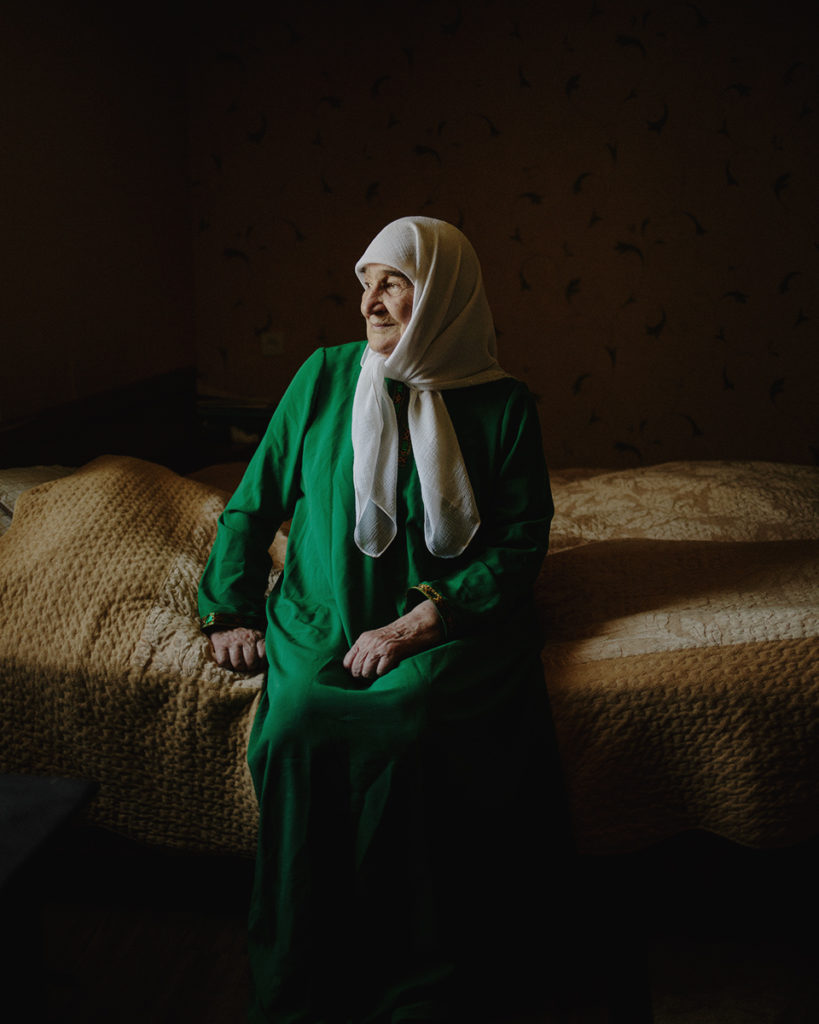
“To me, preserving my people’s beautiful traditions is a counterbalance to the bad reputation that Pankisi and the Kists have gotten,” says Makvala Margoshvili, seated on the shaded terrace next to her lush garden with flowers and vines, including giant trumpet creepers climbing the pillars and balcony to try and reach the metal roof.
In 1995, despite resistance from her community, Makvala Margoshvili decided to create a women’s musical ensemble to represent Pankisi and spread a message of peace in Georgia and beyond. The current members of Aznash Laaman, which means “Voice of the Mountains” in Chechen, are Raisa Margoshvili, Taisa Margoshvili, Markha Machalikashvili, Rita Pareulidze and Yannick Loyer, a French singer who is also the group’s manager. In many concerts, they mix folk songs from Georgian and Kist repertoires with religious hymns, including the nazms that form part of the zikr ceremonies.
“Traditional music is made for common people, and is often a gateway to sacred music,” says Yannick Loyer in a phone interview. “During our concerts abroad nazms are well-received, but they require stronger involvement from the audience than traditional songs.”
The ensemble released an album at the beginning of this year and toured France for more than one month last summer, making zikr and Kist music heard far from Georgia’s remote Pankisi Valley. Their next concert will be closer to home, in October 10 at Backstage76 in Tbilisi.
In her house near the old mosque, Raisa Margoshvili has put up an inflatable swimming pool for her eleven grandchildren, to play and escape the summer heat. She spends most of her time at the house, busy with daily chores, when she is not singing. Despite the rather low attendance at the zikr rituals, she remains optimistic that Sufi values and traditions will remain alive in Pankisi.
“We communicate so that more young people can join us. Some show an interest, but then they have occupations and can’t come. I have three granddaughters living here, they all take folk dance classes. I am hopeful that they will perpetuate our culture.”
Copyright all pictures: Julien Pebrel/Myop.
This article was produced with the support of the USC Center for Religion and Civic Culture, the John Templeton Foundation and Templeton Religion Trust. Opinions expressed do not necessarily reflect the views of these organisations.








